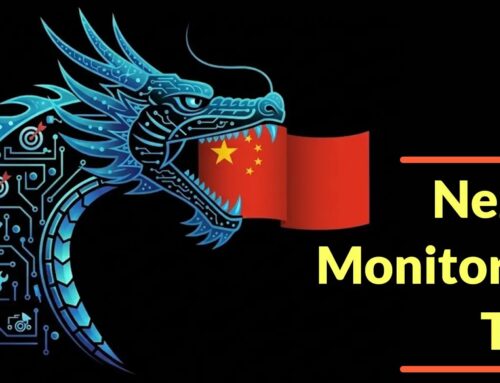
How to Advance from SOC Manager to CISO?
The transition from a Security Operations Center (SOC) Manager to a Chief Information Security Officer (CISO) represents a pivotal career advancement for cybersecurity professionals. It’s a leap that demands not only a deep technical understanding but also sharp leadership acumen and a keen grasp of business strategy. This progression is less about just managing incidents and more about shaping an organization’s entire security posture at an executive level.
This article provides a practical roadmap, outlining the essential steps and skills necessary to navigate this significant career shift and secure an executive-level cybersecurity role.
Beyond the Technical: Business Acumen and Strategic Vision
While a SOC Manager thrives on technical depth – understanding attack vectors, incident response protocols, and security tooling – a CISO’s role transcends these operational details. The CISO must translate technical risks into business impact, communicating effectively with board members and executive teams. This requires a fundamental shift in perspective.
- Financial Literacy: Understanding budgets, ROI, and how cybersecurity investments contribute to overall business objectives. Being able to justify spending not just on security improvements, but on their impact to revenue protection or operational efficiency.
- Risk Management Frameworks: Familiarity with enterprise risk management (ERM) frameworks beyond technical vulnerability management. This includes understanding the broader landscape of operational, financial, and reputational risks.
- Regulatory Compliance: Deep knowledge of industry-specific regulations (e.g., GDPR, HIPAA, PCI DSS) and their implications for the organization. For instance, understanding the nuances of data breach notification requirements, potentially linked to specific vulnerabilities like those exploited in CVE-2023-38827, which could lead to significant compliance failures.
- Strategic Planning: Developing a long-term cybersecurity strategy aligned with the organization’s business goals. This is about proactive defense and resilience, not just reactive incident handling.
Cultivating Leadership and Communication Skills
As a SOC Manager, your leadership often involves directing a team through high-pressure situations. As a CISO, your leadership extends across departments and influences organizational culture. Effective communication becomes paramount.
- Executive Presence: The ability to command respect and influence decisions at the executive level. This involves confident presentation, clear articulation of complex topics, and active listening.
- Stakeholder Management: Collaborating with various departments (Legal, HR, IT, Operations) to embed security into their processes. This might involve discussing the impact of vulnerabilities like those patched in CVE-2024-0676 on different business units.
- Negotiation and Persuasion: Championing security initiatives and securing necessary resources, often by presenting compelling business cases rather than solely technical arguments.
- Team Building and Mentorship: Developing and retaining top cybersecurity talent. The CISO is responsible for building a robust security team and fostering a culture of continuous learning.
Expanding Your Network and Building Your Brand
Career progression to the CISO role often involves visibility and recognition within the industry. Networking plays a crucial role.
- Industry Conferences and Events: Attending and, ideally, speaking at major cybersecurity conferences. This allows for knowledge sharing, personal branding, and connecting with peers and potential mentors.
- Professional Certifications: Pursuing executive-level certifications such as the Certified Information Security Manager (CISM) or Certified Chief Information Security Officer (CCISO). While technical certifications like CISSP are foundational, these executive-focused credentials demonstrate a broader understanding of security governance and management.
- Mentorship: Seeking guidance from experienced CISOs or executive-level professionals. A mentor can offer invaluable insights into the challenges and intricacies of the role.
- Thought Leadership: Contributing to industry discussions through blogging, articles, or social media. This establishes expertise and can open doors to new opportunities.
Practical Steps for the Transition
Making the active shift from SOC Manager to CISO requires deliberate actions and strategic self-development.
- Seek Cross-Functional Experience: Volunteer for projects outside the immediate SOC purview, especially those that involve business units, compliance, or strategic planning.
- Understand Your Organization’s Business Inside Out: Spend time with different departments to understand their operations, challenges, and how technology and security intersect with their goals.
- Develop a CISO-Level Resume and Pitch: Highlight achievements in risk reduction, strategic initiatives, and business impact, rather than solely technical accomplishments.
- Practice Executive Communication: Take opportunities to present to higher management, even within your current role, to hone your ability to convey technical information in a business context.
Key Takeaways for Aspiring CISOs
The journey from SOC Manager to CISO is demanding but rewarding. It necessitates a conscious shift from a purely technical mindset to one that integrates cybersecurity with overarching business objectives. Success hinges on a robust blend of technical knowledge, exceptional leadership, strategic acumen, and the ability to communicate effectively across all levels of an organization. By proactively developing these critical skills and expanding their professional networks, seasoned SOC Managers can confidently pursue and achieve executive leadership in cybersecurity.





